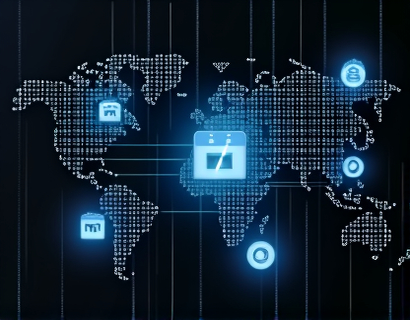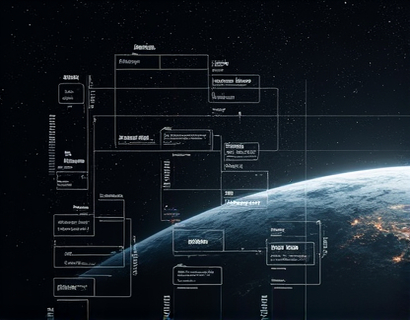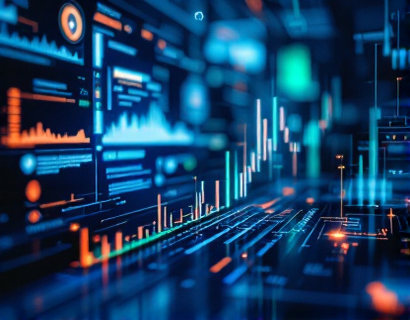Agricultural Software: Revolutionizing Farming with Tailored Tech for Enhanced Efficiency and Productivity
In recent years, the agricultural sector has witnessed a transformative shift driven by advanced software solutions. These technologies are not merely augmenting traditional farming practices but are fundamentally reshaping the industry by enhancing operational efficiency and productivity. The integration of tailored technological innovations is enabling farming professionals and industry experts to navigate the complexities of modern agriculture with unprecedented precision and effectiveness.
The core of this revolution lies in the development of sophisticated software designed specifically for the agricultural sector. These solutions address a wide range of challenges, from optimizing resource usage to improving data management and facilitating informed decision-making. By leveraging these tools, farmers and agricultural businesses can streamline their operations, reduce costs, and increase yields, thereby staying competitive in a rapidly evolving market.
Streamlined Processes
One of the primary benefits of agricultural software is the streamlining of various farming processes. Traditional methods often involve manual and time-consuming tasks, which can lead to errors and inefficiencies. Modern software solutions automate many of these tasks, from planting and harvesting schedules to inventory management and equipment maintenance. This automation not only saves time but also reduces the likelihood of human error, ensuring that operations run smoothly and efficiently.
For instance, precision agriculture software uses GPS and sensor technology to monitor and manage field conditions in real-time. This allows farmers to apply water, fertilizers, and pesticides with pinpoint accuracy, reducing waste and optimizing resource usage. Such precision not only enhances crop yields but also minimizes environmental impact, aligning with the growing demand for sustainable farming practices.
Improved Data Management
Data is the backbone of modern agriculture, and effective data management is crucial for making informed decisions. Agricultural software provides robust platforms for collecting, storing, and analyzing vast amounts of data. This data can include weather patterns, soil conditions, crop health, and market trends, among others. By centralizing and organizing this information, farmers and agricultural professionals can gain valuable insights that drive better decision-making.
Cloud-based solutions play a significant role in this aspect, offering scalable and secure data storage options. These platforms often come with advanced analytics tools that can process and interpret complex data sets, providing actionable recommendations. For example, by analyzing historical weather data and current conditions, farmers can predict optimal planting and harvesting times, maximizing their yields and minimizing risks.
Informed Decision-Making
The ability to make data-driven decisions is a game-changer in agriculture. With access to real-time and historical data, farmers can make more informed choices regarding crop selection, pest management, and financial planning. This level of insight not only improves operational efficiency but also enhances profitability.
Decision support systems (DSS) integrated into agricultural software provide farmers with tailored recommendations based on their specific conditions and goals. These systems use algorithms and machine learning to analyze data and suggest optimal actions. For instance, a DSS might recommend the best type of fertilizer based on soil composition and crop requirements, or suggest the most cost-effective pest control methods based on current pest populations and weather forecasts.
Case Studies and Real-World Applications
To illustrate the impact of agricultural software, consider a few real-world examples. In one case, a large-scale farm in the Midwest implemented a precision agriculture system that included drones for field monitoring and a central data hub for managing all farm data. The result was a 15% increase in crop yields and a 20% reduction in input costs. The farm's manager attributed these improvements to the ability to monitor and adjust practices in real-time, based on accurate and timely data.
Another example is a small family-owned farm in the southwest that adopted a cloud-based farm management software. This software helped the farm optimize irrigation schedules, leading to a 30% reduction in water usage without compromising crop quality. The farmer reported that the software's user-friendly interface and comprehensive reporting features made it easy to manage and understand the data, leading to better decision-making and increased profitability.
Enhancing Crop Monitoring and Health
Crop monitoring and health management are critical components of modern agriculture, and software solutions have significantly advanced in this area. Remote sensing technology, combined with satellite imagery and drone-based surveys, allows farmers to monitor crop health across large areas with high precision. These tools can detect issues such as nutrient deficiencies, pest infestations, and disease outbreaks at an early stage, enabling timely interventions.
For example, multispectral imaging can analyze the reflectance of different wavelengths of light from crops to assess their health and vigor. This data can be used to create detailed maps highlighting areas that require attention, such as regions with lower nutrient levels or higher pest activity. By addressing these issues proactively, farmers can prevent crop losses and ensure optimal growth.
Supply Chain Optimization
Beyond the farm, agricultural software also plays a vital role in optimizing the supply chain. From procurement of inputs to distribution of produce, these solutions streamline each step, reducing costs and improving efficiency. Supply chain management software helps farmers and distributors track inventory, manage orders, and coordinate logistics in real-time.
One notable application is the use of blockchain technology in supply chain management. Blockchain provides a transparent and immutable record of transactions, ensuring traceability and authenticity of agricultural products. This not only builds trust with consumers but also helps in quickly identifying and addressing any issues in the supply chain, such as recalls or quality concerns.
Sustainability and Environmental Impact
The environmental impact of agriculture is a growing concern, and software solutions are playing a key role in promoting sustainable practices. By optimizing resource usage and reducing waste, these technologies help minimize the ecological footprint of farming operations. Precision agriculture, for instance, ensures that inputs like water and fertilizers are used only where and when needed, reducing runoff and pollution.
Additionally, software can assist in carbon footprint management by tracking and analyzing emissions from various farm activities. This data can be used to implement strategies for reducing greenhouse gas emissions, such as optimizing machinery usage and adopting regenerative farming practices. The overall goal is to create a more sustainable and environmentally friendly agricultural system.
Challenges and Considerations
While the benefits of agricultural software are clear, there are also challenges and considerations that need to be addressed. One major challenge is the initial cost of implementing these technologies, which can be a barrier for small-scale farmers. However, the long-term benefits often outweigh the initial investment, as improved efficiency and productivity lead to higher returns over time.
Another consideration is the need for training and support to ensure that farmers and agricultural professionals can effectively use these tools. Software companies and organizations should provide comprehensive training programs and ongoing support to help users maximize the benefits of the technology. Additionally, ensuring data security and privacy is crucial, as sensitive farm data must be protected from unauthorized access.
Future Trends and Innovations
The future of agricultural software is promising, with ongoing innovations set to further transform the industry. One emerging trend is the integration of artificial intelligence (AI) and machine learning (ML) to enhance decision-making and automation. AI-powered systems can analyze vast amounts of data to predict crop yields, optimize planting schedules, and even automate certain farming tasks.
Another area of innovation is the development of Internet of Things (IoT) devices specifically designed for agriculture. These devices, ranging from smart sensors to automated irrigation systems, can be connected and managed through a central platform, providing real-time data and automated control. This interconnected approach, often referred to as smart farming, promises to bring unprecedented levels of efficiency and productivity to the agricultural sector.
Furthermore, the rise of vertical farming and urban agriculture is creating new opportunities for software solutions. These innovative farming methods require specialized software to manage the unique challenges of growing crops in controlled environments. Software that optimizes lighting, temperature, and nutrient delivery can significantly enhance the success of vertical farms, making them a viable option for food production in urban areas.
Conclusion
The integration of advanced software solutions in agriculture is revolutionizing the way farming is conducted, offering numerous benefits that enhance efficiency, productivity, and sustainability. By streamlining processes, improving data management, and enabling informed decision-making, these technologies are empowering farmers and agricultural professionals to thrive in a competitive market. As the industry continues to evolve, the role of software will only become more critical, driving further innovations and advancements in the agricultural sector.










































